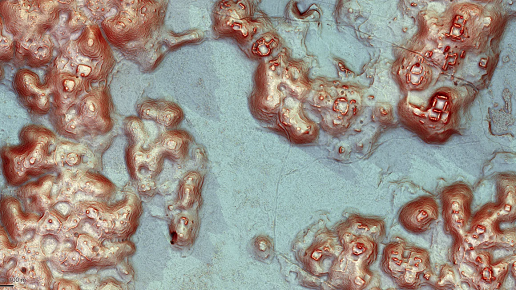For over 1,000 years, dense forests in Mexico’s Campeche region hid evidence of ancient Maya civilization, long considered an “archaeological blank spot.” Using aerial LiDAR technology, researchers recently unveiled thousands of hidden Maya structures and a large city, named Valeriana. LiDAR scans, conducted in 2013, revealed 6,764 structures over a 47-square-mile area, including urban and rural settlements.
Valeriana, similar to other major Maya cities, had a reservoir, a ball court, and connected plazas. Study author Luke Auld-Thomas said the findings confirmed long-held beliefs that Campeche housed many Maya ruins. The new data also highlights connections among Maya cities, challenging the view of Maya cities as isolated entities, according to landscape archaeologist Carlos Morales-Aguilar. Instead, the research suggests extensive networks with organized infrastructure, including roads, residential areas, and agricultural systems.
For decades, Campeche received little attention due to its challenging terrain and lack of well-known artifacts, said Marcello Canuto of Tulane University. This new LiDAR study opens up “a new dawn” for Maya archaeology, enabling access to previously unseen areas. LiDAR survey data reveals ancient Maya buildings (inset, center) clustered on a hilltop, while a satellite image (far left and right) shows modern agriculture and roadbuilding underway in the valleys below. Courtesy Luke Auld-Thomas
LiDAR survey data reveals ancient Maya buildings (inset, center) clustered on a hilltop, while a satellite image (far left and right) shows modern agriculture and roadbuilding underway in the valleys below. Courtesy Luke Auld-Thomas
The “LiDAR revolution” is transforming Maya archaeology, said Tomás Gallareta Cervera of Kenyon College, by advancing research on ancient urbanism. As more Maya sites are uncovered, preserving these historical environments becomes increasingly important, Auld-Thomas noted, emphasizing that these locations have long been significant to local communities and their conservation.
Overall, this discovery reinforces that the Maya civilization developed highly interconnected urban networks across diverse landscapes, with advanced infrastructure adapted to the natural terrain.







